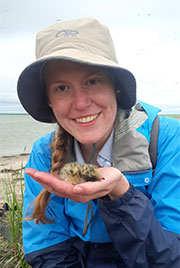The wonderful world of sparrows
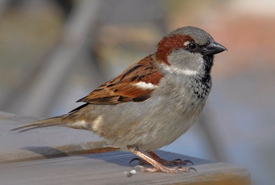
House sparrow (Photo from Wikimedia Commons)
When asked to picture a sparrow, I think a lot of us, especially city dwellers, think of the common house sparrow. Though ubiquitous across southern Canada, this little sparrow is not actually native to North America. This introduced species hails from Europe and, like many immigrants, came to North America via New York in the 1850s. Over the next half century, the house sparrow spread west across the continent.
But rather than focus on an avian interloper, I’d like to introduce you to the colourful world (OK, it’s actually pretty brown) of Canadian sparrows, all in time for World Sparrow Day!
Northern Canada: Harris’s sparrow
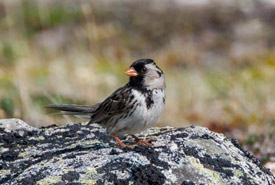
Harris's sparrow (Photo by NCC)
To start off our tour, we will meet the Harris’s sparrow. This is Canada’s only endemic breeding songbird, meaning that it breeds solely in Canada and nowhere else. Harris’s sparrow spends its breeding season on the Canadian tundra. It’s also the largest member of the sparrow and bunting family. Harris’s sparrow made the State of North America’s Birds Report watch list in 2016 due to its steeply declining population.
Key field marks: black bib, black forehead and crown and pink bill.
Western Canada: Golden-crowned sparrow
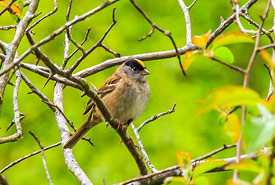
Golden-crowned sparrow (Photo by Murray Foubister)
A Pacific specialty, the golden-crowned sparrow is the only bird in this blog post (including the house sparrow) that’s not currently facing a population decline. Relative to the other profiled sparrows, not much is known about the breeding habits of these birds, due to their remote nesting sites on the tundra and shrublands of British Columbia and Alaska. Instead, most birders will be familiar with this species on their wintering grounds, such as British Columbia’s southern coast.
Key field marks: yellow central crown, black lateral crown stripes and grey bill.
Central Canada: Baird’s sparrow
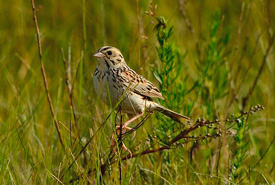
Baird's sparrow (Photo by Rick Bohn)
A species at risk in Canada, the range of the Baird’s sparrow is restricted to the prairies, the world’s most endangered ecosystem. Like many grassland birds, its populations have declined due to the conversion of prairies into agricultural land. Baird’s sparrow is a secretive bird and often only reveals itself to the patient birder with its high-pitched jingling song.
Key field marks: black "moustache" and buff breast/flanks heavily streaked with black.
Eastern Canada: Field sparrow
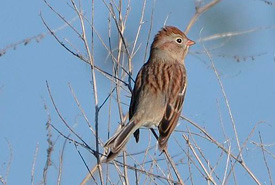
Field sparrow (Photo from Wikimedia Commons)
If you find yourself out in the countryside on a warm spring day and hear a trill that curiously sounds like a bouncing ball, you have found the field sparrow. According to the ICUN Red List of Threatened Species, these sparrow populations have declined dramatically in recent years. This trend is partly due to habitat destruction, as urban and suburban land replaces the fields that this species relies upon. However, due to their large range and large baseline population, the field sparrow is not listed yet as a threatened species.
Key field marks: unstreaked breast, rusty cap, pink bill and white eye ring.
Atlantic Canada: Nelson’s sparrow
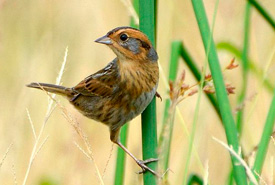
Nelson's sparrow (Photo from Wikimedia Commons)
In 1995, the American Ornithologists’ Union split the sharp-tailed sparrow into two species: saltmarsh sparrow, a more southern bird whose range lies south of Canada’s Atlantic coast, and Nelson’s sparrow. In Atlantic Canada, Nelson’s sparrow can be found (though not easily; it’s known to be secretive) in salt marsh habitat. Like many coastal birds, Nelson’s sparrow is also on the State of North America’s Birds watch list due to declining populations.
Key field marks: orange breast with buffy streaks, grey auriculars (feathers that cover the ear) and a short, pointed tail.

